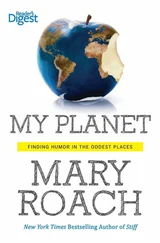Gene Cernan, in the astronaut commentary for the Apollo 17 Lunar Surface Journal, bemoans the endless prepping and whatiffing that typifies today’s NASA. “I don’t know if we…have the mentality—I don’t want to say ‘guts’—to take the kind of risks we did when we [went to the moon] the first time…. And that’s a sad commentary.” After all, no matter how much you plan and how carefully you engineer things, there will always be problems. The safety manager of the eighth Apollo mission once famously pointed out: “Apollo 8 has 5,600,000 parts…. Even if all functioned with 99.9 percent reliability, we could expect 5,600 defects.”
On the other hand, as they say, failing to plan is planning to fail.
Years ago, I interviewed astronaut Chris Hadfield for an article about how crews train for spacewalks (EVAs wherein astronauts float outside the spacecraft, usually to make repairs or add new hardware). I asked him if he thought NASA overdid it with their protracted rehearsing and planning. Hadfield would spend 250 hours in the Neutral Buoyancy Laboratory practicing for a six-hour EVA. (The NBL is a huge indoor pool containing ISS mock-up pieces; floating in a spacesuit in water is a passable approximation of spacewalking.) “Yeah, there’s lots of options,” Hadfield said. “You could do nothing and hope for the best, or you could spend billions of dollars on each flight and try to nail down every last detail.” NASA, he says, aims for somewhere in the middle. “The prep is what matters,” he added. “That’s what we do for a living. We don’t fly in space for a living. We have meetings, plan, prepare, train. I’ve been an astronaut for six years, and I’ve been in space for eight days.”
Hadfield told me that the famous Apollo 13 incident—the explosion on the way to the moon and the solution Jim Lovell and his crewmates undertook—had actually been “simmed” by NASA at least once. Apparently everything Lovell did in space had been simmed on the ground. Including not taking a bath for two weeks.
10. HOUSTON, WE HAVE A FUNGUS
Space Hygiene and the Men Who Stopped Bathing for Science

Jim Lovell is best known as the commander of Apollo 13, the astronaut with the problem. As anyone who’s seen the Tom Hanks movie knows, an oxygen tank exploded on the way to the moon, knocking out power in the Command Module and forcing Lovell and his two crewmates to hunker down in the Lunar Module for four days with limited oxygen, water, and heat. For forty years, people have been coming up to Lovell saying, “My god, what an ordeal.” I said that to him too, but not in reference to Apollo 13. I was talking about Gemini VII: two men, two weeks, no bathing, same underwear. Inside a pressure suit, inside a capsule so cramped that Lovell could not straighten his legs.
Gemini VII, launched on December 4, 1965, was a medical dress rehearsal for the Apollo lunar program. A round-trip moon mission takes two weeks, and no astronaut had spent that much time in zero gravity. (NASA’s record at that point was eight days.) If a medical emergency was going to develop on, say, the thirteenth day, the flight surgeons wanted to learn about it when the astronauts were 200 miles from Earth, not 200,000.
There was concern that wearing a spacesuit for two weeks in a space the size of the front seat of a VW Beetle might be unendurable. The ever-heedful NASA proposed to Lovell and his crewmate Frank Borman that they undertake a real-time simulation of Gemini VII inside a mock-up of the capsule—a rehearsal rehearsal. “Fourteen days sitting in a straight-up ejection seat on Earth?” says Borman in his NASA oral history. “We were able to get that nonsense kicked out in a hurry.” [60] Borman could be a bit crusty. As Lovell put it, “Two weeks with Frank Borman anyplace is a trial.”
In fact, there was no need for the nonsense, because similar nonsense was already underway out at Wright-Patterson Air Force Base in Ohio. From January 1964 to November 1965, a series of nine experiments on “minimal personal hygiene”—including a two-week Gemini VII simulation—had been taking place in an aluminum space capsule simulator inside Building 824 of the Aerospace Medical Research Laboratories. The AMRL people did not mess around. Minimal was defined as “no bathing or sponging of the body, no shaving, no hair and nail grooming…, no changing clothes and bed linen, the use of substandard oral hygiene, and minimal use of wipes” for, depending on the experiment, anywhere from two to six weeks. One team of subjects lived and slept in spacesuits and helmets for four weeks. Their under-clothes and socks deteriorated so completely that they had to be replaced. “Subject C became so nauseated by body odor that he was forced to remove his helmet after wearing it for less than ten hours. Subjects A and B had already removed their helmets by that time.” It didn’t help. With the helmet off, body odors were “forced out around the neck of the pressure suit,” a situation described by B, on day four, as “absolutely horrible.” This explains why Frank Borman, in the mission transcript for the second day of Gemini VII, asks Lovell if he has a clothespin. He’s about to unzip his suit.
(“For your nose,” he tells the perplexed Lovell.)
For a different set of subjects, the heat was turned up to 92 degrees Fahrenheit. The Gemini VII simulated crew not only spent two weeks, day and night, in a spacesuit, but had to struggle with the same waste collection systems that would soon bedevil Lovell and Borman.
To quantify the squalor, the Air Force scientists would usher the men—most of them students from the nearby University of Dayton—into a portable shower, one by one, and collect the runoff for analysis. John Brown was the officer in charge of the simulated space capsule, formally known as the Life Support Systems Evaluator and casually known as “the chamber.” Oddly, the showers were the part Brown recalls the men complaining about. Because the water was unheated. “They didn’t want the hot water cooking the skin flakes,” he said, speaking four words together that have no business being so.
As unsavory as this project must have been for the subjects, it was no bowl of rose petals for the researchers. It was their meandering sniffs that made possible the conclusion: “Body odor strongest in axilla, groin, feet.”
Axilla (armpits) and groin occupy the top two slots because that’s where the body’s apocrine sweat glands are. Unlike the body-cooling eccrine sweat glands, which secrete mainly water, the apocrine glands produce a cloudy, viscous secretion that, when broken down by bacteria, creates the hallmark BO punch. I don’t know quite how to phrase this or what it reveals about me, but I have never detected BO in the pubic region. O, for sure, but not BO. I asked University of Pennsylvania dermatologist and body odor researcher Jim Leyden about this. He verified the apocrine presence in the groin, and insisted there’s a similar smell. “It’s just not that easily appreciated,” he said, “because the sensing device is farther away.” I decided to let it ride.
The apocrine glands are hooked up to the autonomic nervous system; fear, anger, and nervousness prompt an upswing in secretions. (Companies that test deodorants call it “emotional sweat,” to distinguish it from the temperature-triggered kind.) [61] That is why some deodorant and antiperspirant efficacy tests include an “emotional collection.” A group of subjects sit with pads under their arms to absorb secretions while being forced to sing karaoke or speak in front of a group. The pads are then weighed and the armpit smells rated by professional odor judges. I was once, as part of an article on body odor, invited to be a guest judge. “Take little bunny sniffs,” I was told.
You would think that being strapped to a launching rocket would be a situation in which a man would be, to quote Leyden, “milking those glands for everything they’re worth.” I asked Jim Lovell, in a telephone conversation, if he could recall the comments made by the frogmen who opened the Gemini VII hatch after splashdown.
Читать дальше













